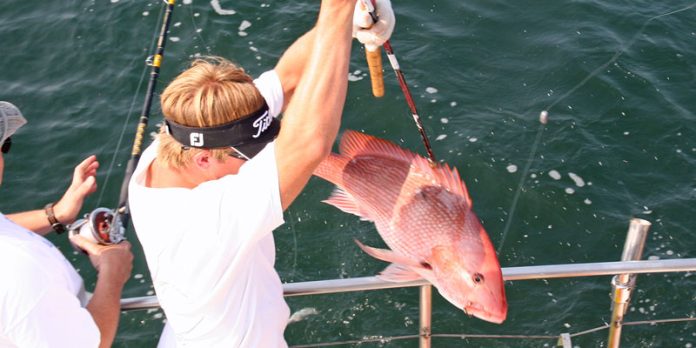WASHINGTON – While Alabama fishermen land 34% of all recreationally caught red snapper in the Gulf, their livelihood has been threatened by illegal fishing by cartel members.
To put an end to that threat, the U.S. Senate passed legislation from Sens. Katie Britt and Tommy Tuberville to target cartel members who are illegally catching and smuggling red snapper and tuna imports into the country.

The Illegal Red Snapper and Tuna Enforcement Act was approved by unanimous consent Monday; the full text can be found here. The bipartisan legislation was also led by Commerce Committee Chairman Ted Cruz (R-Texas) and Sen. Brian Schatz (D-Hawaii).
“This is great news for our hardworking fishermen who have worked overtime to compete with Mexican cartels flooding our markets with illegal red snapper,” said Tuberville (R-Auburn). “It’s also a win for every American because it cuts off the cash flow to cartels, which have been terrorizing our communities.
“I’ll continue standing up for our fishermen and fighting to preserve the outdoor activities Alabamians enjoy.”
The Illegal Red Snapper and Tuna Enforcement Act would require the National Institute of Standards and Technology (NIST) and the National Oceanic and Atmospheric Administration (NOAA) to develop a standard methodology for identifying the country of origin of red snapper or tuna imported into the United States.
Recent data reports that recreational and commercial fishing supports over 12,000 jobs in the state and contributes more than $1.1 billion in sales annually to the state economy. In Alabama, red snapper season began May 23.
“These Alabamians deserve fairness when fishing and selling their products in the market,” said Britt (R-Montgomery). “The Illegal Red Snapper and Tuna Enforcement Act is a first step to protecting Alabama’s fishermen and putting cartel-backed poachers on notice for their illicit activities in the Gulf.
“I look forward to seeing the House pass this important legislation and send it to President Trump’s desk.”
Snapper poaching is an issue as Mexican fishermen illegally catch red snapper in the gulf, smuggle it into their country, and then rip off American consumers by selling the fish back to American consumers.
Mexican fishermen cross the maritime border between Texas and Mexico on small boats called “lanchas” to illegally catch red snapper in U.S. waters and return to Mexico. The fish are sold in Mexico or mixed in with legally-caught red snapper then exported back into the United States across land borders.
Red snapper is one of the most well-managed and profitable fish in the Gulf, but illegal fishing by Mexican lanchas puts law-abiding U.S. fishermen and seafood producers at a competitive disadvantage.
Illegal, Unreported, and Unregulated (IUU) fishing activities violate national and international fishing regulations.
Cartels engaged in drug smuggling and human trafficking also engage in the profitable illegal fishing of red snapper. The same fishing boats and fishermen who catch red snapper also smuggle drugs and humans for the cartels, and these profits support the organization.
There is technology that chemically tests and finds the geographic origin of many foods, but not for red snapper or tuna.
With the help of machine learning, NIST scientists are currently able to chemically determine the geographic origin of foods, including strawberries, apples, cherries, ginseng, ginkgo, beef, honey, and rice. Using those same methodologies, these scientists believe it would be possible to determine the geographic origin of red snapper, allowing law enforcement to have a better understanding of the networks that support illegal fishing.
The Illegal Red Snapper and Tuna Enforcement Act would develop a field test kit the Coast Guard could use to accurately ascertain whether fish were caught in Mexico or U.S. waters, thus allowing federal and state law enforcement officers to identify the origin of the fish and confiscate illegally caught red snapper or tuna before it is imported back into the U.S. It would also reduce the financial incentives for the crime, since the fish could no longer be sold back into the United States. If successful, this method could be expanded to identify other IUU fish.
Don’t miss out! Subscribe to our email newsletter to have all our smart stories delivered to your inbox.



